When I first started learning about shipping, I didn’t realize how important shipping container dimensions were.
Every shipment depends on choosing the right container size, and even a small difference can affect cost, space, and planning.
A standard container might look simple, but the exact length, width, height, and door size matter a lot when it comes to loading cargo. No matter if you’re moving goods across the ocean or just planning storage, knowing these details makes everything easier.
In this post, I’ll break down the most common shipping container dimensions, explain the differences between standard and high cube containers, and share a container size chart you can use as a quick reference.
It’s simpler than it looks once you understand the basics.
Why Do Shipping Container Dimensions Matter?
When I think about shipping containers, I realize their size isn’t just about fitting cargo – it affects the whole shipping process.
- Space planning: Helps you know how much cargo can fit inside.
- Cost control: Choosing the right size avoids wasted space or extra containers.
- Loading efficiency: Correct dimensions ensure goods fit through the doors.
- Transport limits: Some routes and ports can’t handle oversized containers.
- Safety: Proper weight distribution reduces damage and accidents.
Understanding shipping container dimensions saves time, money, and stress. It’s the first step to making sure goods move smoothly from origin to destination.
Shipping Container Dimensions: A Quick Overview
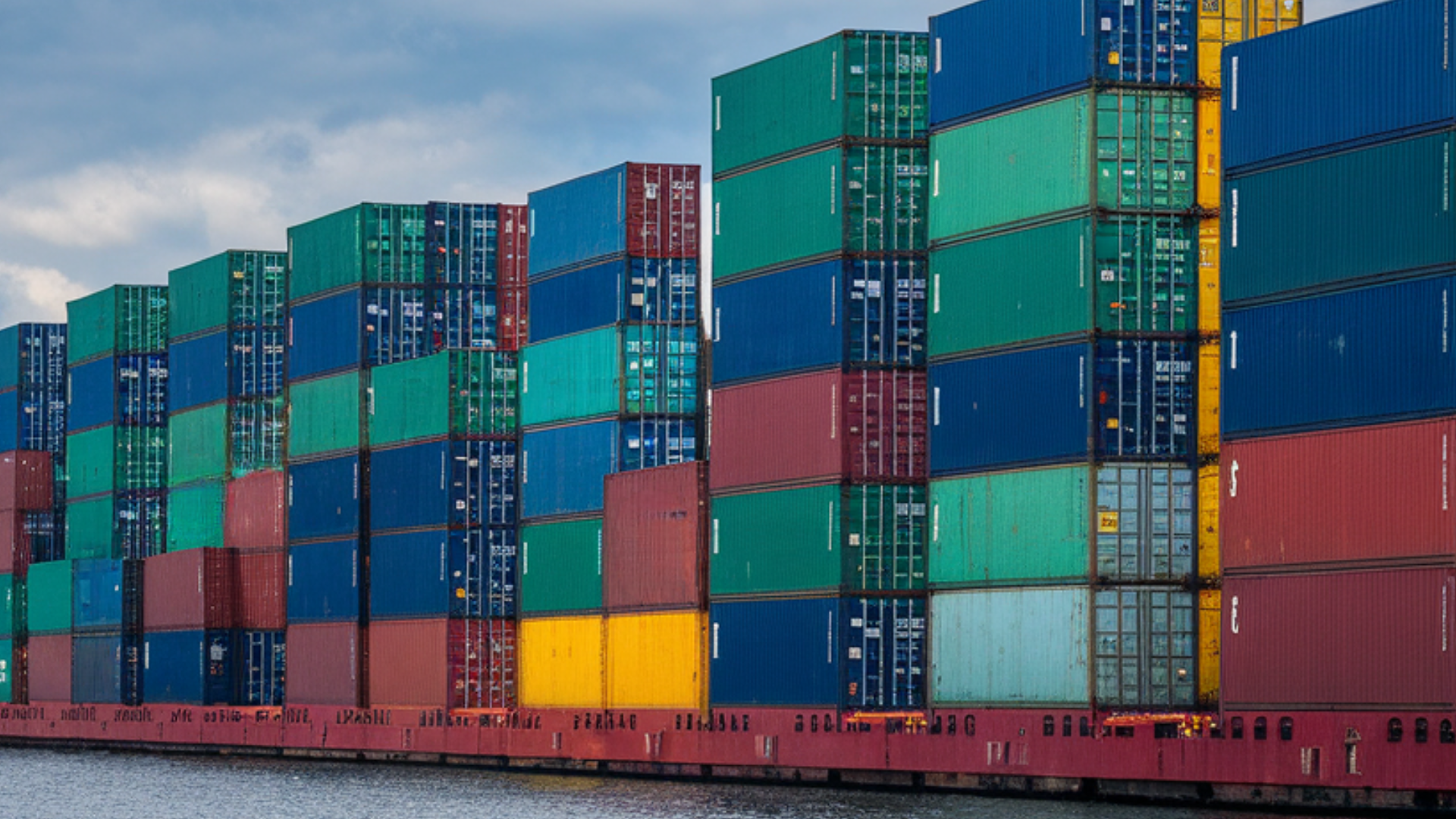
When I first looked into shipping containers, most people only mentioned 20- and 40-foot sizes. But dimensions also include inside, outside, and door openings, which are key for planning.
1. External Dimensions
These are the outside measurements of the container – length, width, and height. Standard containers are 8 feet wide and 8 feet 6 inches high, while high cube containers are 9 feet 6 inches high.
Lengths vary, but the most common are 20 feet and 40 feet. These dimensions are important for transport, stacking, and fitting containers on ships or trucks.
2. Internal Dimensions
The inside is slightly smaller than the external size because of the container walls. A 20-foot container usually has about 19’4″ of internal length, while a 40-foot container has around 39’5″.
Internal width and height are also reduced a little, so always check the exact specs when calculating cargo space.
3. Door Opening Dimensions
Door openings are often overlooked but can cause big problems. For most standard containers, the door width is about 7’8″ and the height is 7’5″. High cube doors are a bit taller.
Knowing the door size is critical when loading pallets, machinery, or oversized items.
4. TEU and FEU Basics
Container sizes are also measured in units: TEU (Twenty-Foot Equivalent Unit) and FEU (Forty-Foot Equivalent Unit).
One 20-foot container equals 1 TEU, and one 40-foot container equals 2 TEUs. These units help carriers and shippers measure cargo capacity across ships and ports.
Different Shipping Container Sizes
When I first looked into containers, I thought they only came in 20-foot or 40-foot options. In reality, there are several sizes designed for different cargo needs.
1. 20-Foot Standard Container
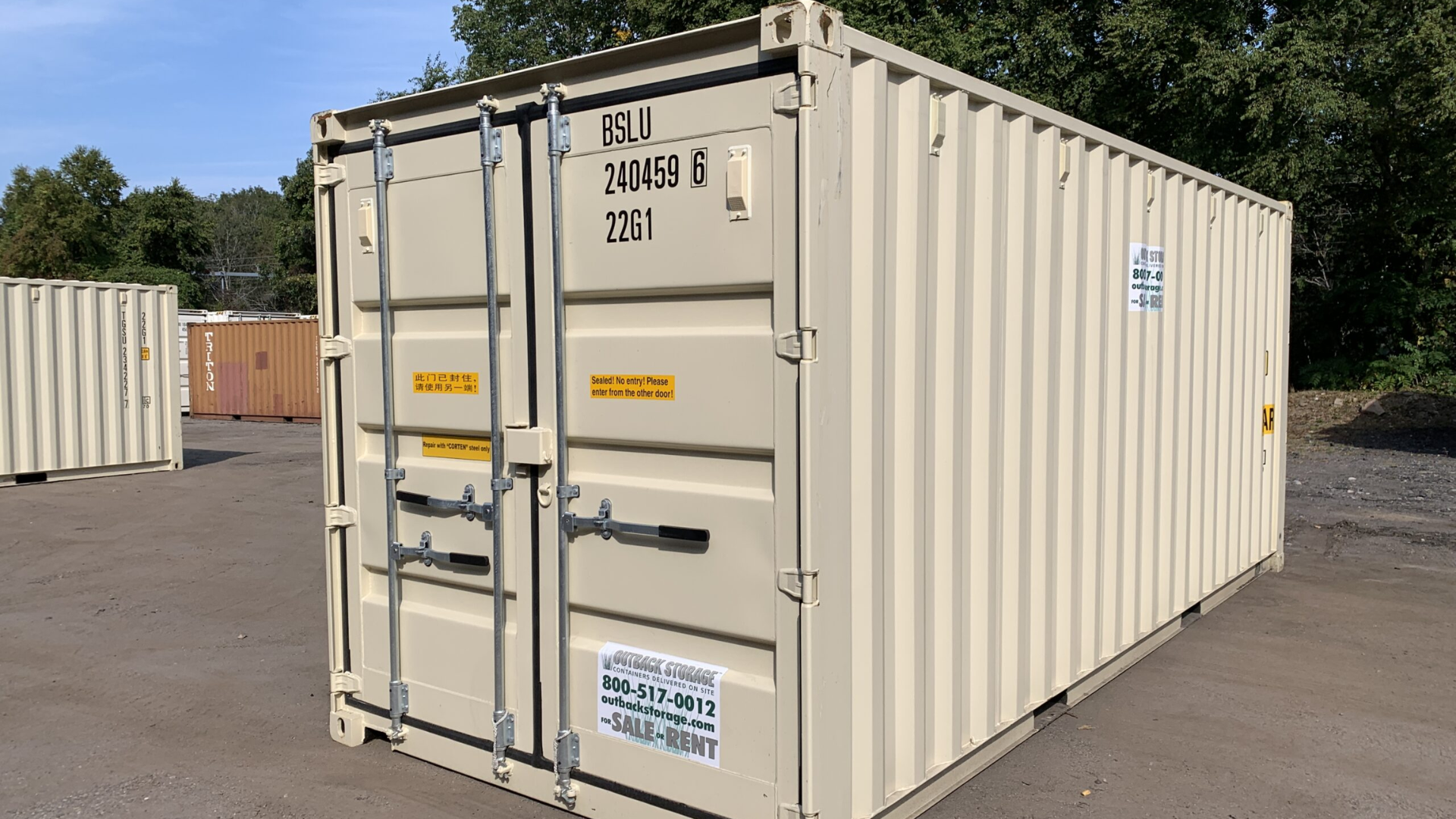
- External size: 20’ L × 8’ W × 8’6″ H
- Internal size: about 19’4″ L × 7’8″ W × 7’10″ H
- Door opening: 7’8″ W × 7’5″ H
- Volume: around 1,170 cubic feet
- Best for: heavy cargo like machinery, metals, or bulk goods.
2. 40-Foot Standard Container
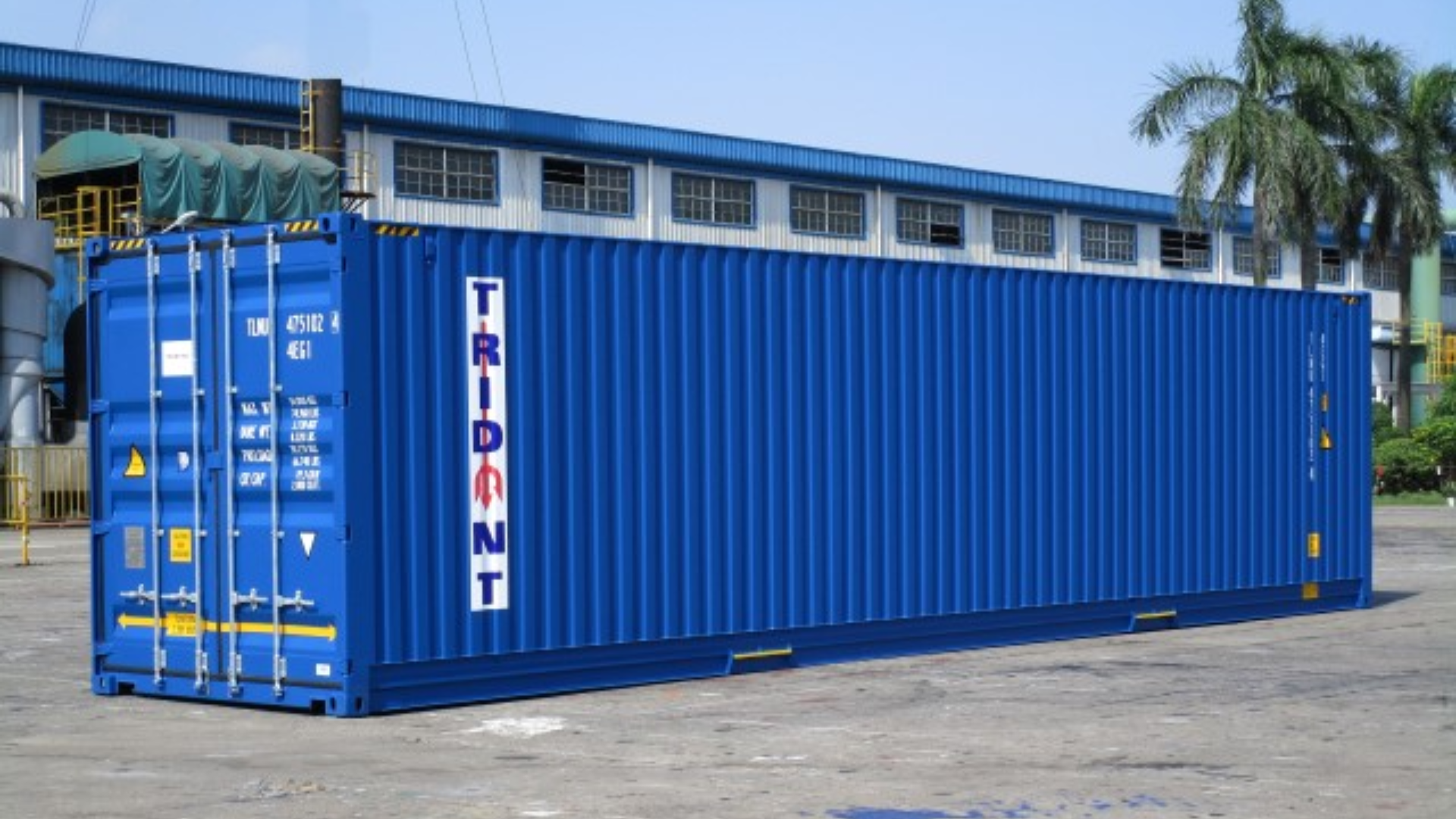
- External size: 40’ L × 8’ W × 8’6″ H
- Internal size: about 39’5″ L × 7’8″ W × 7’10″ H
- Door opening: 7’8″ W × 7’5″ H
- Volume: around 2,390 cubic feet
- Best for: larger loads, furniture, and lighter goods that need more space.
3. 40-Foot High Cube Container (40HC)
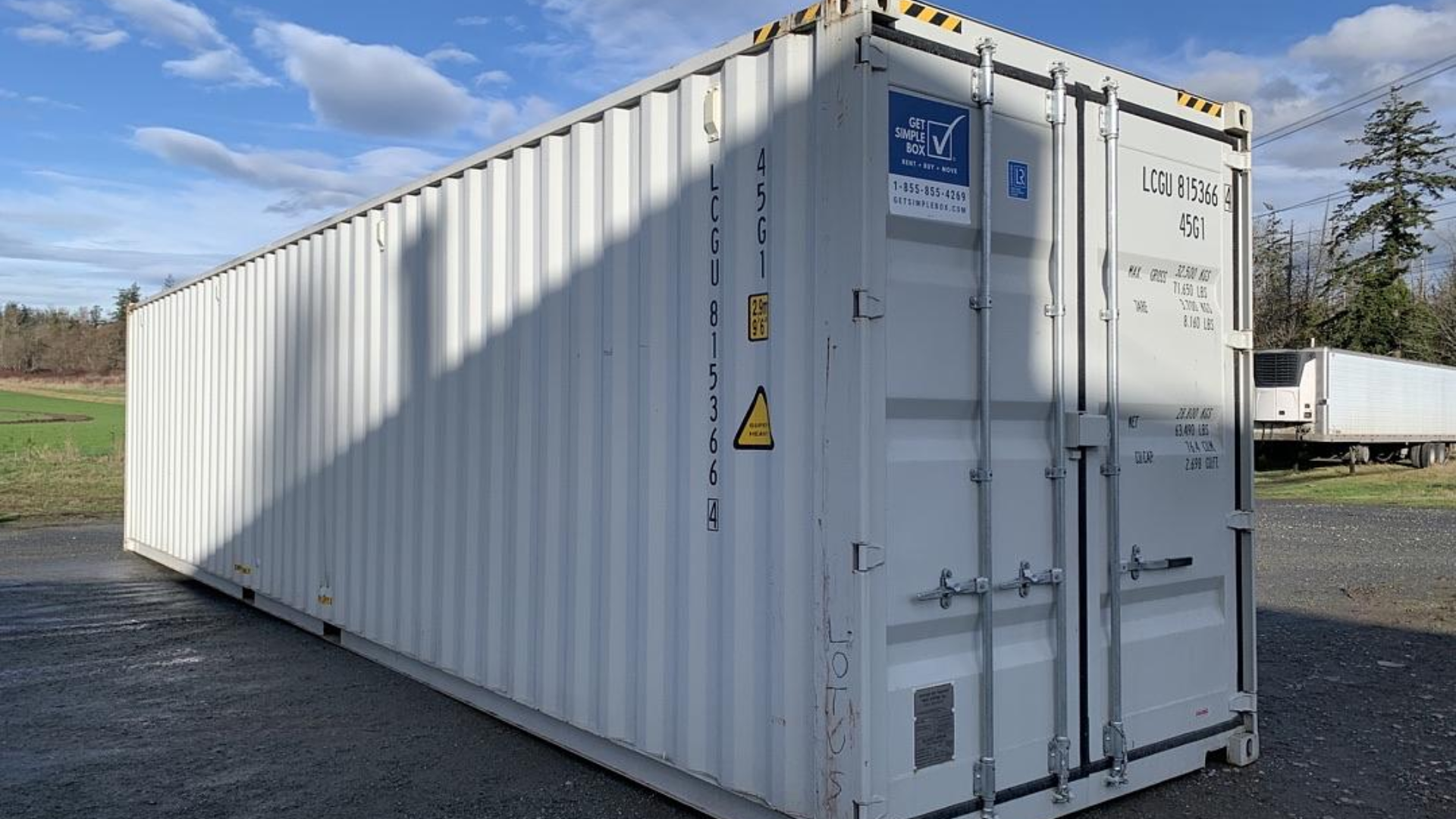
- External size: 40’ L × 8’ W × 9’6″ H
- Internal size: about 39’5″ L × 7’8″ W × 8’10″ H
- Door opening: 7’8″ W × 8’5″ H
- Volume: around 2,690 cubic feet
- Best for: taller cargo or when extra space is needed without adding another container.
4. 45-Foot High Cube Container (45HC)
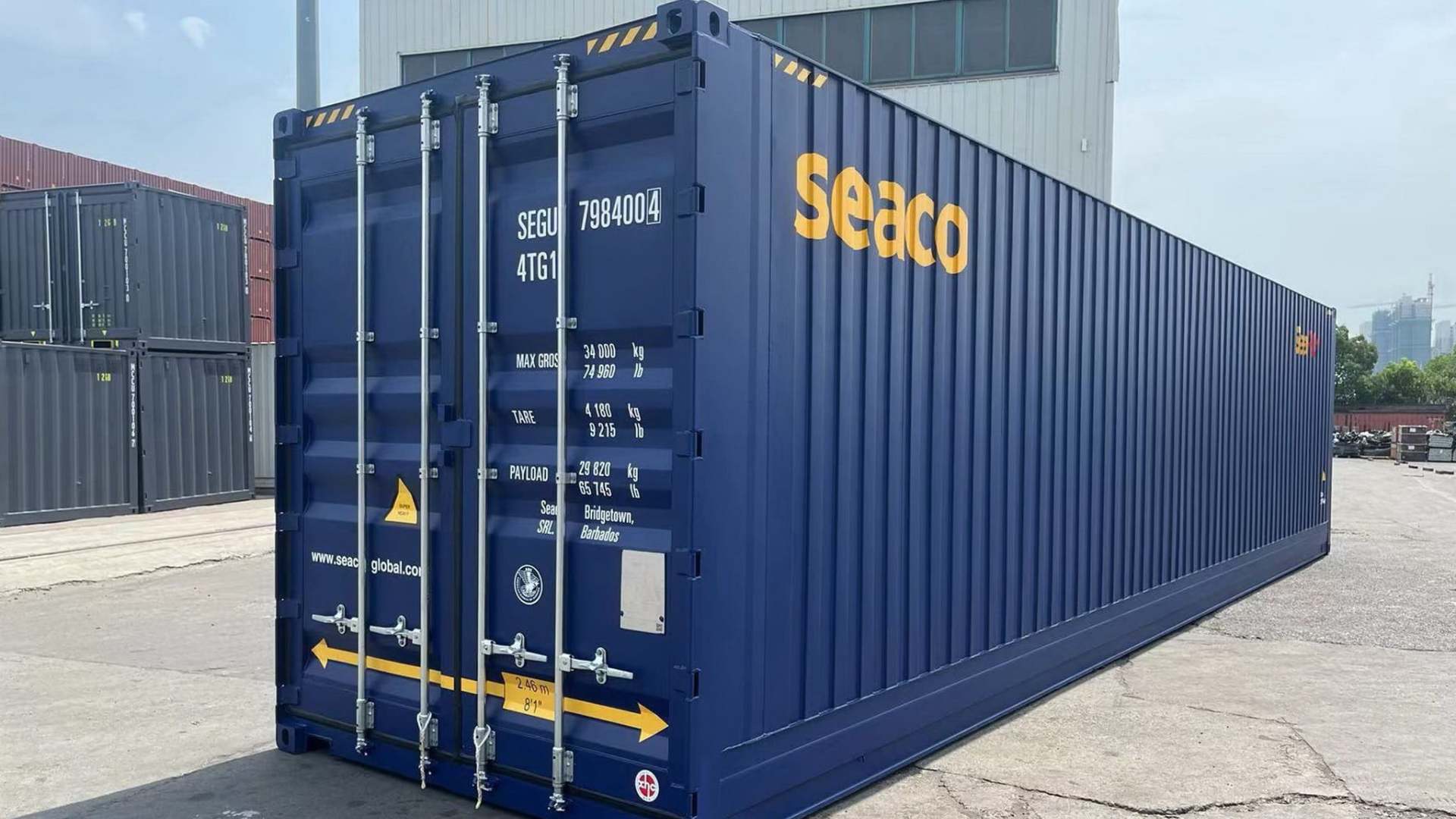
- External size: 45’ L × 8’ W × 9’6″ H
- Internal size: about 44’5″ L × 7’8″ W × 8’10″ H
- Door opening: 7’8″ W × 8’5″ H
- Volume: around 3,040 cubic feet
- Best for: maximizing space on longer shipments, often used in intermodal transport.
5. 53-Foot Domestic Container
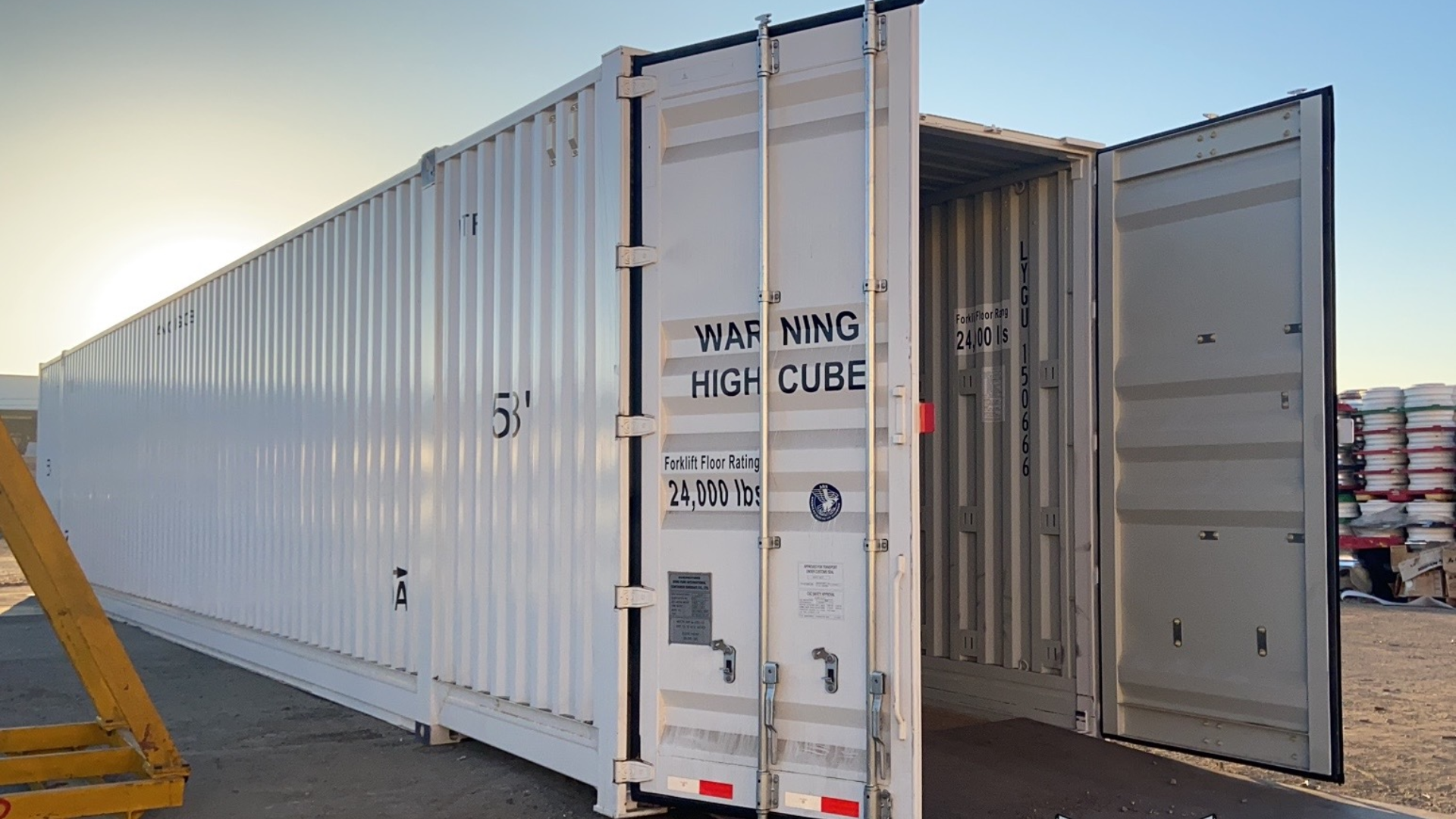
- External size: 53’ L × 8’6″ W × 9’6″ H
- Internal size: about 52’6″ L × 8’2″ W × 9’1″ H
- Door opening: 8’2″ W × 9’1″ H
- Volume: around 3,850 cubic feet
- Best for: rail and truck transport within North America; not approved for ocean shipping.
Shipping Container Size Chart
| Container Type | External Dimensions (L × W × H) | Internal Dimensions (L × W × H) | Door Opening (W × H) | Volume (Approx.) |
|---|---|---|---|---|
| 20′ Standard | 20′ × 8′ × 8′6″ | 19′4″ × 7′8″ × 7′10″ | 7′8″ × 7′5″ | 1,170 cu ft |
| 40′ Standard | 40′ × 8′ × 8′6″ | 39′5″ × 7′8″ × 7′10″ | 7′8″ × 7′5″ | 2,390 cu ft |
| 40′ High Cube (HC) | 40′ × 8′ × 9′6″ | 39′5″ × 7′8″ × 8′10″ | 7′8″ × 8′5″ | 2,690 cu ft |
| 45′ High Cube (HC) | 45′ × 8′ × 9′6″ | 44′5″ × 7′8″ × 8′10″ | 7′8″ × 8′5″ | 3,040 cu ft |
| 53′ Domestic | 53′ × 8′6″ × 9′6″ | 52′6″ × 8′2″ × 9′1″ | 8′2″ × 9′1″ | 3,850 cu ft |
This shipping container size chart makes it easier to compare options at a glance. Always remember: actual dimensions can vary slightly by manufacturer or shipping line, so double-check specs before planning a load.
Shipping Container Dimensions: Special Types
Not every shipment fits neatly into a standard box. That’s why there are special container types, each designed for unique cargo needs.
1. Open-Top Containers
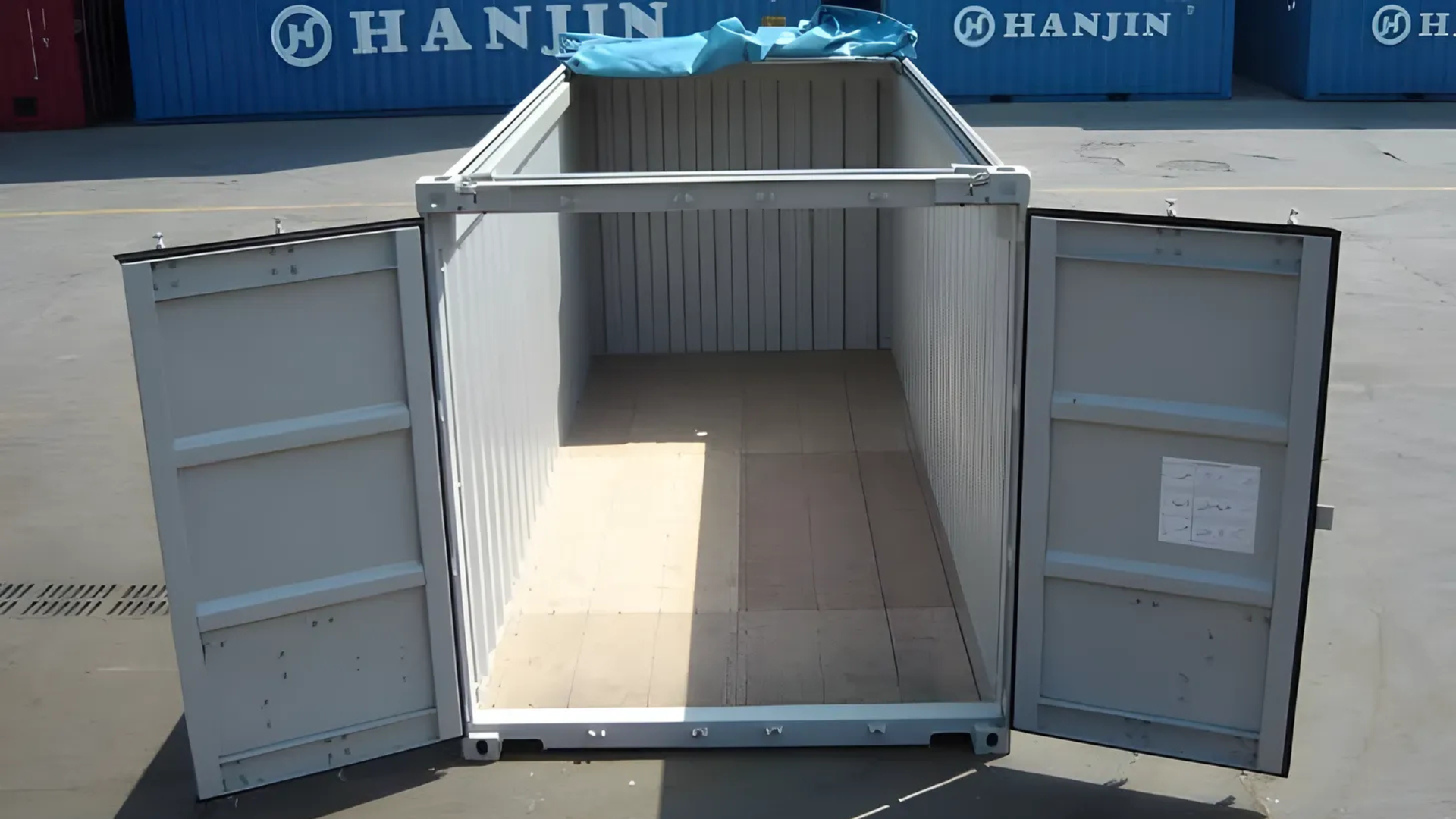
Open-top containers have the same length and width as standard units, but the roof can be removed or covered with a tarp.
This makes them perfect for oversized cargo like machinery or raw materials that need to be loaded from above with a crane. The internal height is slightly reduced because of the removable top beams.
2. Flat Rack Containers
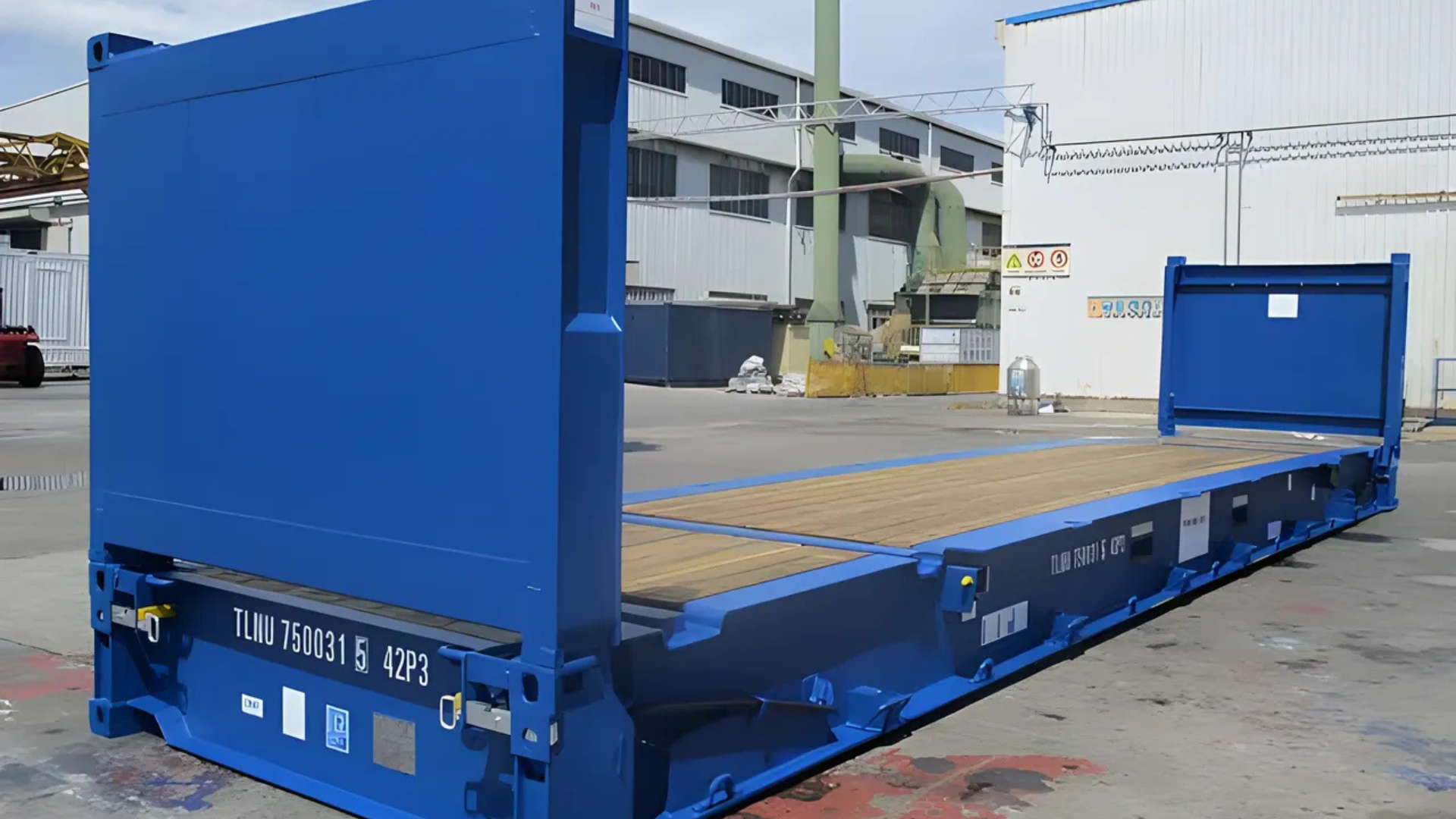
Flat racks are essentially containers with no side walls and no roof. They come in 20-foot and 40-foot sizes and are built for heavy, oversized loads such as vehicles, pipes, or construction equipment.
The flat design allows cargo to overhang, but weight must be balanced carefully across the deck.
3. Refrigerated Containers (Reefers)
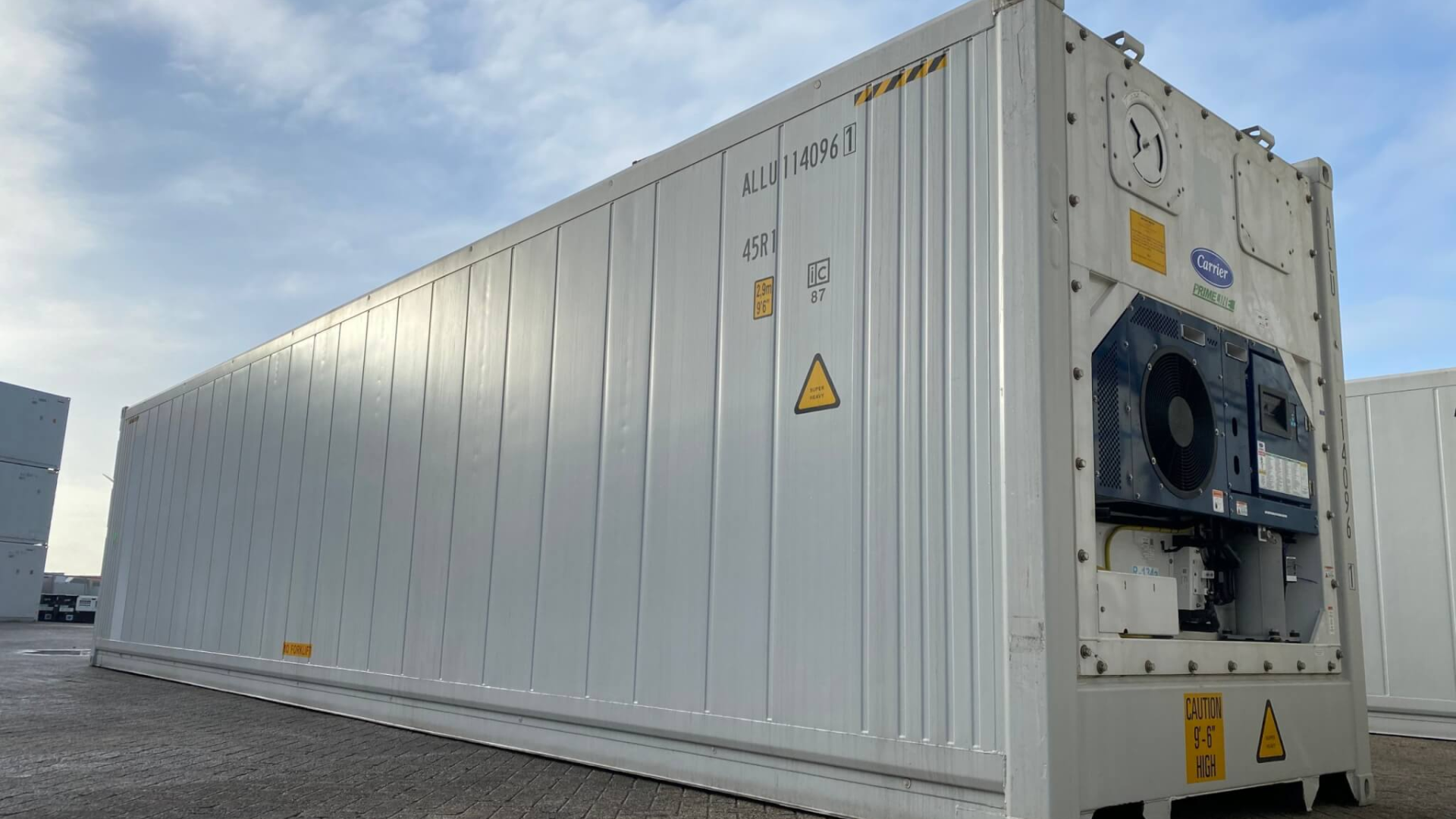
Reefer containers are insulated containers with built-in refrigeration units that control temperature throughout the journey.
Standard sizes include 20-foot and 40-foot, with internal space slightly reduced due to insulation and cooling equipment. They are commonly used for food, medicine, and other perishable goods.
4. Tank Containers

Tank containers, or “ISO tanks,” are designed for transporting liquids, chemicals, or gases. They consist of a cylindrical tank secured inside a standard-sized frame, usually 20-foot.
While the external frame matches ISO standards, the internal capacity depends on the liquid volume and safety requirements.
Shipping Container Weight and Load Ratings
When planning shipments, it’s not enough to know length, width, and height. Weight ratings are just as important for safety and cost.
- Tare Weight: The empty weight of the container itself (about 4,800 lb for a 20′, 8,400 lb for a 40′).
- Payload (Net Capacity): The maximum weight of cargo the container can safely carry, excluding its tare weight.
- Max Gross Weight: The combined limit of container + cargo (commonly 67,200 lb for ISO containers).
- CSC Plate Info: Every container has a metal plate showing official weight ratings and certifications.
- Variations by Type: High cube, reefers, and special containers may have slightly different ratings.
Knowing these figures prevents overloading, avoids fines, and keeps cargo secure during transit.
Tips for Choosing the Right Shipping Container Size
Picking the right container isn’t just about grabbing the biggest one available. I’ve learned that the right choice depends on your cargo, budget, and route.
- Match cargo type: Heavy, dense goods (like metals or machinery) usually fit better in a 20-foot container. Bulky, light goods (like furniture or clothing) often need a 40-foot or larger.
- Check volume needs: Calculate your shipment’s cubic feet or meters and compare it to container capacity.
- Consider height: If your cargo is tall, a high cube (9’6”) container may be the safer option.
- Review door openings: Make sure your largest item actually fits through the doors.
- Think about transport limits: Some ports, bridges, and carriers can’t handle oversized containers.
- Plan for cost efficiency: A half-empty container means wasted money, so choose the size that matches your load.
The right container size keeps shipping simple, safe, and cost-effective.
Conclusion
Understanding shipping container dimensions makes the whole process of moving goods much clearer.
From the standard 20-foot and 40-foot sizes to high cubes and even 53-foot domestic containers, each option has its own strengths.
The right choice depends on what you’re shipping, how much space you need, and where the container will travel. It’s not just about length and height; door openings, volume, and weight ratings matter too.
I’ve learned that when you match your cargo with the right container size, you avoid wasted space, extra costs, and delays.
If you’d like more practical tips on shipping methods, freight options, and logistics planning, check out my other blogs for straightforward advice that saves time and money.















